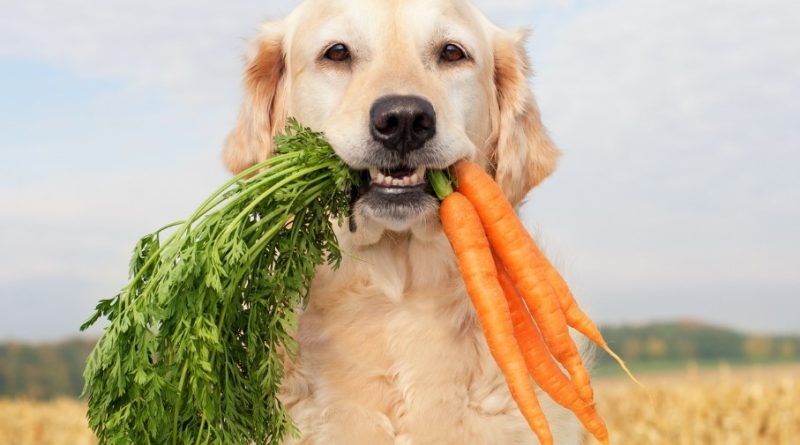Can dogs eat vegetables – find out now
Perhaps influenced by pop culture, we have become accustomed to thinking of dogs as carnivorous animals, willing to trade anything for a good piece of steak attached to the bone. However, the question arises: can dogs eat vegetables?
While animal protein is essential for pet nutrition, spending time with dogs reveals that they are interested in various other foods, such as vegetables.
With that in mind, to answer whether dogs can eat vegetables, we have prepared this exclusive article about these foods and more information on the subject. Check it out below.
Can dogs eat vegetables after all?
Yes, in general, dogs can eat vegetables without any problems, with the exception of some specific foods, such as garlic and onions, which contain substances toxic to the species. Therefore, owners should pay attention to the vegetables that the dog can eat.
Omnivores, like us, dogs obtain the nutrients their bodies need from a variety of foods, not just animal protein, which includes vegetables and some fruits.
So, some owners may wonder: which vegetables can dogs eat? It is possible to replace normally fattier and calorie-rich treats, such as doggie treats and biscuits, with highly palatable options for dogs, such as carrots and watermelon.
According to Dr. Mariana Porsani, a veterinarian specializing in nutrition, vegetables are low-calorie foods that also help with water and fiber intake, contributing to a feeling of satiety, which is positive for weight control in dogs.
Which vegetables can be offered to the dog?
According to Dr. Mariana, some of the most recommended vegetables for dogs are chayote squash, zucchini, carrots, eggplant, and cauliflower. According to her, this is due to their good palatability, low calorie content, and high water content. Other options that can also be offered are peas and cucumbers.
Some vegetables that dogs cannot eat are harmful to the pet’s body, depending on the preparation method and the amount ingested. Potatoes contain a substance called solanine, which can depress the central nervous system and cause gastrointestinal problems in dogs.
This substance is mainly concentrated in the potato skin, so it can be offered to the dog as long as it is peeled and cooked only in water. Still, it is advisable to prefer other safer foods, such as sweet potatoes, yams, and parsnips, which do not contain the substance.
Can dogs eat vegetables – Find out now: Can beetroot be served?
Beetroot is another vegetable that is not toxic to dogs but requires extra care in administration. Rich in sugars, it is contraindicated for diabetic or overweight dogs.
According to the nutrition specialist veterinarian, due to the pigments that “stain” feces and urine, the food can be confused or mask health problems whose symptoms are the presence of blood in the dog’s urine or stool.
What is the right way to prepare and serve vegetables for dogs?
So, how to prepare vegetables for dogs? According to Dr. Mariana, it is very interesting to serve vegetables with the skin whenever possible, as they are very rich in fiber. For this, it is essential that the food has been very well washed in running water to avoid contamination.
In case of using products with chlorine in the composition, follow the manufacturer’s instructions, remembering to wash the food well before serving it to the dog properly.
In addition to potatoes, whose skin contains solanine, which can be harmful to dogs’ bodies, other types of skin are more prone to contamination by microorganisms or irritations in the intestinal tract.
Can the food be served with the skin to the dog?
As seen, dogs can eat vegetables. Although it is not a rule, when in doubt about whether or not to offer the food with the skin, a tip is to think about how you yourself consume the food. In general, very thick and porous skins are more difficult to wash and ingest.
Also, regarding how to make vegetables for dogs, it is interesting to highlight that, even though dogs may appreciate the crunchier texture of certain foods, vegetables do not need to be offered raw. In fact, it is even recommended that they be cooked in water or steam.
According to the specialist, there is no problem in adding salt to the food during cooking. “Unlike humans, healthy dogs do not become hypertensive from sodium consumption,” says Dr. Mariana. Seasonings like pepper and garlic should not be used as they are harmful to the dog’s health.
If you liked the article “Can dogs eat vegetables – Find out now,” stay tuned for this week’s posts, we have many news and pet news to share!




